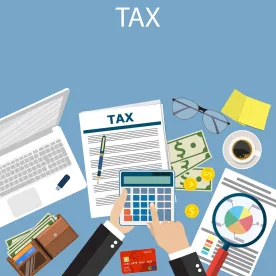On October 19, the Treasury Department (“Treasury”) released eagerly anticipated guidance regarding the “qualified opportunity fund” (“QOF”) program that was enacted as part of the Tax Cuts and Jobs Act in December 2017. The generally taxpayer-friendly guidance – in the form of proposed regulations, a revenue ruling and a draft self-certification form for QOFs, together with draft instructions for the form – answers many questions about the program, although certain details remain open and further guidance is expected before the end of the year. The discussion below will first provide some background on this program, then provide a high level summary of certain key elements of the new guidance, before concluding with a look at areas where questions remain.
Background
Generally, this program provides tax incentives for investment in certain economically distressed communities called “opportunity zones.” Opportunity zones are census tracts that satisfy applicable requirements to be considered low-income and have been designated as opportunity zones by the governors of each state, which designations were then approved by Treasury earlier this year. A list and map of current opportunity zones are available here.
An investor can take advantage of this new program by reinvesting capital gain realized from the sale or exchange of any capital asset to an unrelated party into a QOF within 180 days of the date of disposition of that capital asset. Tax on that gain will then be deferred until 2026 or upon sale or exchange of the QOF interest, whichever is earlier. If the interest in the QOF is held for at least five years before the deferred gain is triggered, then the investor’s basis in the QOF interest is increased to the extent of 10% of the deferred gain, with the result that 10% of the deferred gain is permanently excluded from income for the investor. If the interest in the QOF is held for at least seven years before the deferred gain is triggered, then that 10% increases to 15%. If the QOF interest has been held for less than five years as of December 31, 2026, the investor will recognize all of the deferred gain at that time.
In addition to the deferral of the gain used to make the QOF investment, if the investor holds the investment in the QOF for at least ten years, then, upon disposition of the investor’s interest in the QOF, the investor receives an increase in basis in the QOF interest to its fair market value at the time of sale. This means that, if all requirements are satisfied, all post-acquisition gain in the QOF interest is excluded from income for the investor.
In order for a QOF investor to benefit from these tax incentives, the QOF must hold at least 90% of its aggregate assets in “qualified opportunity zone property” (“QOZP”), which is tangible property that a QOF acquires after 2017 and uses in a trade or business, and that satisfies the following two tests:
-
The use of the property in the qualified opportunity zone originates with the QOF, or the QOF substantially improves the property; and
-
During substantially all of the QOF’s holding period for such property, substantially all of the use of such property was in a qualified opportunity zone.
QOZP may be stock or partnership interests in an entity that invests in qualified opportunity zone business property, or it may be direct investment in qualified opportunity zone business property.
While the framework for this program has been in place since December 2017, there were many details regarding specifics that were unclear. As a result, even though some investors began to investigate potential investments, most taxpayers have been waiting to take concrete action in this area until more guidance was released. Many open questions have been answered in the guidance released this month, although more guidance is needed and Treasury has said such further guidance is expected before the end of the year.
Key Questions Answered by the New Guidance
Q: Will gain realized through a pass-through entity such as a partnership be eligible for these incentives? If so, does the partnership need to make the qualifying investment?
A: If a partnership has eligible capital gains that it seeks to reinvest pursuant to this program, either the partnership can elect to defer some or all of the gain or, if the partnership does not make that election, any partner that was allocated all or a portion of those capital gains may elect to defer some or all of his or her share of the gains. If the partner ultimately makes the election to defer the gain, the 180-day timeframe within which the gain must be reinvested does not start until the last day of the partnership taxable year in which the realization event occurred, since that is deemed to be the date on which the partner recognizes its share of the gain. If the partnership elects to defer the gain and reinvest pursuant to this program, the 180-day clock will start on the date the partnership sold or exchanged the asset giving rise to the capital gains.
The proposed regulations also clarify that any taxpayer, including entities such as partnerships, C corporations, S corporations, trusts or estates, is eligible to elect deferral under these rules.
Q: What if an investor invests in a QOF with a combination of eligible capital gain and other funds?
A: The proposed regulations clarify that the provision of these rules permitting a basis step-up on the sale of a QOF interest held for at least 10 years, such that all post-acquisition gain on that QOF interest is excluded from income, applies only to the portion of the QOF interest that was purchased with eligible capital gain. If an investor uses eligible capital gain to fund a portion of the investment, and other funds to fund another portion of the investment, the portion funded with other funds is not eligible for the tax benefit.
In addition, the proposed regulations clarify that the investment in a QOF must be an equity interest to benefit from these rules; debt will not qualify.
Q: When is the latest date on which an investment in a QOF can be made?
A: An investment in a QOF may be made at any time prior to June 30, 2027. This is because gain eligible for deferral must be gain that, absent the deferral, would be recognized on or before December 31, 2026. Thus, in the case of gain that would have been recognized on December 31, 2026, if the investor elects to defer that gain and invest it in a QOF, that investor has 180 days to do so.
Q: The current opportunity zones retain that designation for 10 years. What happens after 2028, when that designation expires?
A: Once an investor has invested in a QOF and held that QOF interest for at least 10 years, the investor may continue to hold the investment for longer than 10 years and still benefit from the basis step-up that results in exclusion from income of post-acquisition gain in that QOF interest. The proposed regulations clarify that this treatment will apply even after the expiration of the designation of a particular opportunity zone at the end of 2028. Under the proposed regulations, an investor may make the election to increase their basis in the QOF interest for all dispositions of qualifying interests that occur after a 10-year holding period and before January 1, 2048.
Q: What does it mean to “substantially improve” property in a qualified opportunity zone?
A: Under the rules as set forth initially, to substantially improve property means to undertake improvements that double the basis of the property within 30 months of acquisition of the property. In response to concerns that this could be a difficult standard to meet, as part of the recent guidance, Treasury also issued a revenue ruling that concludes, in the case of land and a building purchased simultaneously, the land itself does not have to be separately improved and the basis in the land need not be included in the basis that must be doubled to satisfy the requirement for the property overall. This will make it easier for investors in vacant or run-down buildings to satisfy the “substantial improvement” requirement, even if the building is located on land that comprised a significant portion of the purchase price of the property.
Q: What entities may be QOFs and how is QOF status certified?
A: The proposed regulations clarify that a QOF may be a partnership, corporation or LLC taxable as either a partnership or a corporation. QOFs may not be disregarded entities, however, so a QOF may not be a single-member LLC. Also, pre-existing entities may be used as QOFs, as long as they are able to satisfy the requirement that the entity did not own a significant amount of tangible property that was acquired prior to December 31, 2017.
As discussed in previously issued guidance, a QOF will be able to self-certify as to its QOF status. With the proposed regulations, Treasury released a draft of the form (and a draft of the applicable instructions for the form) that a QOF will use to make such self-certification, by attaching the form to its timely filed federal income tax return (taking into account extensions). The form will be required to be attached to the QOF’s return for all relevant tax years.
One detail regarding self-certification provided in the proposed regulations is that a QOF will be permitted to indicate on its self-certification form the first month in which it wishes to be treated as a QOF, which provides flexibility for entities that may be formed at one point in the year but may not make the necessary investments to qualify as a QOF until later that year.
In addition, the draft form and instructions indicate that a QOF will be required to include a statement regarding its purpose of investing in qualified opportunity zones in its organizational documents.
Remaining Questions
While the guidance that Treasury has released to date provides much-needed detail regarding certain aspects of the qualified opportunity zone rules, critical questions remain open, including among other things:
-
whether certain transactions undertaken by a QOF may trigger the inclusion of deferred gain prior to when it would otherwise be included under these rules;
-
what will constitute a “reasonable period” in which a QOF may reinvest proceeds from the sale of qualifying assets without incurring a penalty;
-
administrative rules regarding implications and processes in the event a QOF fails to maintain the required investments; and
-
further detail regarding information reporting requirements.
Treasury has said that further guidance is expected before the end of 2018.
Conclusion
The proposed regulations may be relied upon as of the date of their release, even though they are not yet final. A public hearing is scheduled for January 10, 2019, at which time comments received in response to the proposed regulations will be discussed.
While this area of tax law is currently developing, and more details are yet to come, this guidance generally is taxpayer-friendly and appears to indicate that Treasury wishes to facilitate widespread use of this program. This presents unique opportunities for investors to deploy capital in a way that is intended to spur economic growth in communities that most need it, while providing those investors with potentially significant tax benefits.




 />i
/>i

